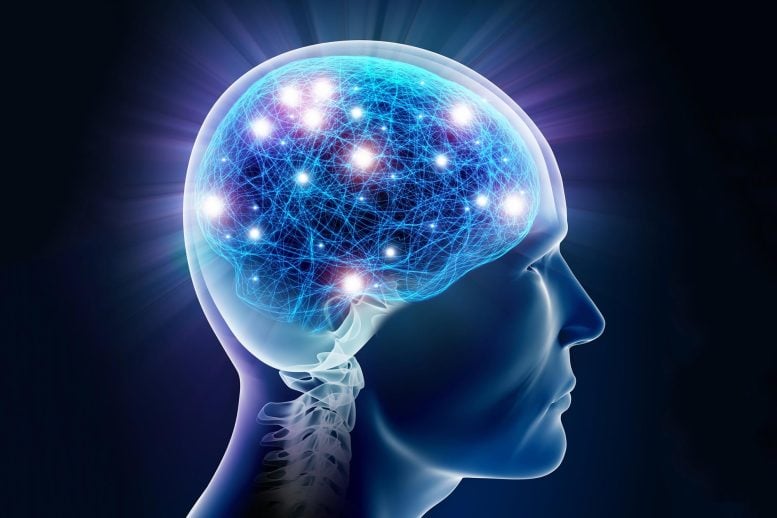
NIH-funded study identifies brain cells that form boundaries between discrete events.
Researchers have identified two types of cells in our brains that are involved in organizing discrete memories based on when they occurred. This finding improves our understanding of how the human brain forms memories and could have implications in memory disorders such as Alzheimer’s disease. The study was supported by the National Institutes of Health’s Brain Research Through Advancing Innovative Neurotechnologies (BRAIN) Initiative and published in Nature Neuroscience.
“This work is transformative in how the researchers studied the way the human brain thinks,” said Jim Gnadt, Ph.D., program director at the National Institute of Neurological Disorders and Stroke and the NIH BRAIN Initiative. “It brings to human neuroscience an approach used previously in non-human primates and rodents by recording directly from neurons that are generating thoughts.”
This study, led by Ueli Rutishauser, Ph.D., professor of neurosurgery, neurology and biomedical sciences at Cedars-Sinai Medical Center in Los Angeles, started with a deceptively simple question: how does our brain form and organize memories? We live our awake lives as one continuous experience, but it is believed based on human behavior studies, that we store these life events as individual, distinct moments. What marks the beginning and end of a memory? This theory is referred to as “event segmentation,” and we know relatively little about how the process works in the human brain.
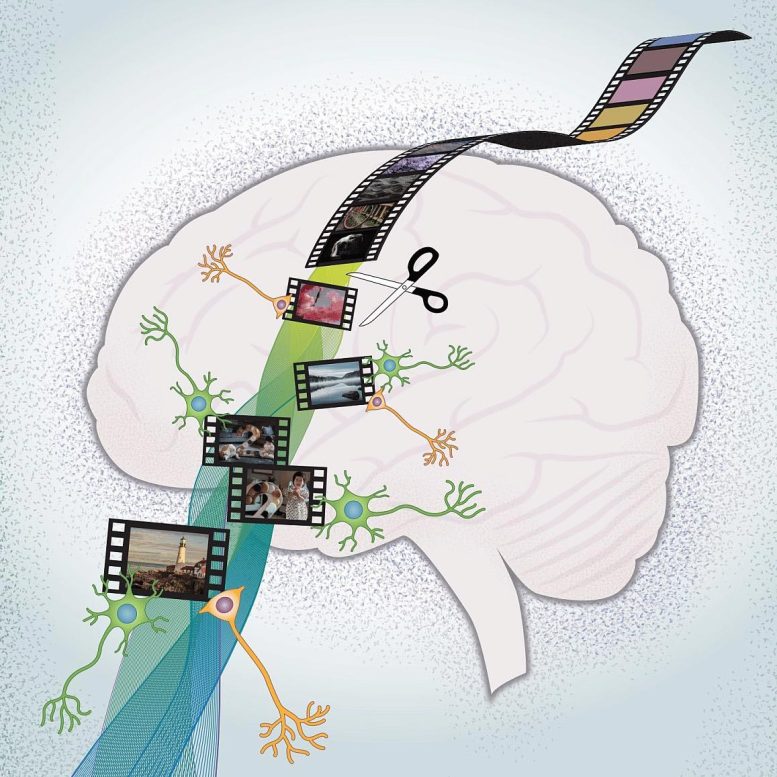
Researchers recorded the brain activity of participants as they watched videos, and they noticed two distinct groups of cells that responded to different types of boundaries by increasing activity. Credit: Rutishauser lab, Cedars-Sinai Medical Center
To study this, Rutishauser and his colleagues worked with 20 patients who were undergoing intracranial recording of brain activity to guide surgery for treatment of their drug-resistant epilepsy. They looked at how the patients’ brain activity was affected when shown film clips containing different types of “cognitive boundaries”—transitions thought to trigger changes in how a memory is stored and that mark the beginning and end of memory “files” in the brain.
The first type, referred to as a “soft boundary,” is a video containing a scene that then cuts to another scene that continues the same story. For example, a baseball game showing a pitch is thrown and, when the batter hits the ball, the camera cuts to a shot of the fielder making a play. In contrast, a “hard boundary” is a cut to a completely different story—imagine if the batted ball were immediately followed by a cut to a commercial.
Jie Zheng, Ph.D., postdoctoral fellow at Children’s Hospital Boston and first author of the study, explained the key difference between the two boundaries.
“Is this a new scene within the same story, or are we watching a completely different story? How much the narrative changes from one clip to the next determines the type of cognitive boundary,” said Zheng.
The researchers recorded the brain activity of participants as they watched the videos, and they noticed two distinct groups of cells that responded to different types of boundaries by increasing their activity. One group, called “boundary cells” became more active in response to either a soft or hard boundary. A second group, referred to as “event cells” responded only to hard boundaries. This led to the theory that the creation of a new memory occurs when there is a peak in the activity of both boundary and event cells, which is something that only occurs following a hard boundary.
One analogy to how memories might be stored and accessed in the brain is how photos are stored on your phone or computer. Often, photos are automatically grouped into events based on when and where they were taken and then later displayed to you as a key photo from that event. When you tap or click on that photo, you can drill down into that specific event.
“A boundary response can be thought of like creating a new photo event,” said Dr. Rutishauser. “As you build the memory, it’s like new photos are being added to that event. When a hard boundary occurs, that event is closed and a new one begins. Soft boundaries can be thought of to represent new images created within a single event.”
The researchers next looked at memory retrieval and how this process relates to the firing of boundary and event cells. They theorized that the brain uses boundary peaks as markers for “skimming” over past memories, much in the way the key photos are used to identify events. When the brain finds a firing pattern that looks familiar, it “opens” that event.
Two different memory tests designed to study this theory were used. In the first, the participants were shown a series of still images and were asked whether they were from a scene in the film clips they just watched. Study participants were more likely to remember images that occurred soon after a hard or soft boundary, which is when a new “photo” or “event” would have been created.
The second test involved showing pairs of images taken from film clips that they had just watched. The participants were then asked which of the two images had appeared first. It turned out that they had a much harder time choosing the correct image if the two occurred on different sides of a hard boundary, possibly because they had been placed in different “events.”
These findings provide a look into how the human brain creates, stores, and accesses memories. Because event segmentation is a process that can be affected in people living with memory disorders, these insights could be applied to the development of new therapies.
In the future, Dr. Rutishauser and his team plan to look at two possible avenues to develop therapies related to these findings. First, neurons that use the chemical dopamine, which are most-known for their role in reward mechanisms, may be activated by boundary and event cells, suggesting a possible target to help strengthen the formation of memories.
Second, one of the brain’s normal internal rhythms, known as the theta rhythm, has been connected to learning and memory. If event cells fired in time with that rhythm, the participants had an easier time remembering the order of the images that they were shown. Because deep brain stimulation can affect theta rhythms, this could be another avenue for treating patients with certain memory disorders.
Reference: “Neurons detect cognitive boundaries to structure episodic memories in humans” by Jie Zheng, Andrea G. P. Schjetnan, Mar Yebra, Bernard A. Gomes, Clayton P. Mosher, Suneil K. Kalia, Taufik A. Valiante, Adam N. Mamelak, Gabriel Kreiman and Ueli Rutishauser, 7 March 2022, Nature Neuroscience.
DOI: 10.1038/s41593-022-01020-w
This project was made possible by a multi-institutional consortium through the NIH BRAIN Initiative’s Research on Humans program. Institutions involved in this study were Cedars-Sinai Medical Center, Children’s Hospital Boston (site PI Gabriel Kreiman, Ph.D.), and Toronto Western Hospital (site PI Taufik Valiante, M.D., Ph.D.). The study was funded by the NIH BRAIN Initiative (NS103792, NS117839), the National Science Foundation, and Brain Canada.
The BRAIN Initiative® is a registered trademark of the U.S. Department of Health and Human Services.
The NIH BRAIN Initiative is managed by 10 institutes whose missions and current research portfolios complement the goals of The BRAIN Initiative®: National Center for Complementary and Integrative Health, National Eye Institute, National Institute on Aging, National Institute on Alcohol Abuse and Alcoholism, National Institute of Biomedical Imaging and Bioengineering, Eunice Kennedy Shriver National Institute of Child Health and Human Development, National Institute on Drug Abuse, National Institute on Deafness and other Communication Disorders, National Institute of Mental Health, and National Institute of Neurological Disorders and Stroke.
NINDS is the nation’s leading funder of research on the brain and nervous system. The mission of NINDS is to seek fundamental knowledge about the brain and nervous system and to use that knowledge to reduce the burden of neurological disease.
About the National Institutes of Health (NIH): NIH, the nation’s medical research agency, includes 27 Institutes and Centers and is a component of the U.S. Department of Health and Human Services. NIH is the primary federal agency conducting and supporting basic, clinical, and translational medical research, and is investigating the causes, treatments, and cures for both common and rare diseases.

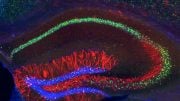
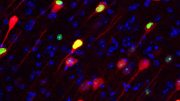
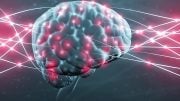

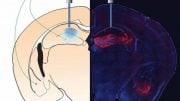
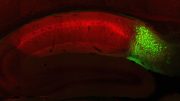
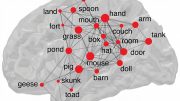
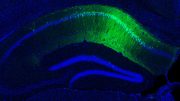
Interesting.
Some left-field thoughts for consideration.
1. Is Space-Time a Continuous Function or Space and Time Discrete in Nature ?
2. For Conscious Animate beings (Ones with Life) the corresponding question to ask is the following. Is Life-Time a Continuous Function or Is Life and Time Discrete in Nature?
3. All Life Forms are Bio-Electric in Nature. We live on a Planet which is evolving. It has Polarity and magnetic Field thanks to its structure and composition of Iron core and Magna and other viscous material constituting its mantle. North and South Polee. There are reports that the Poles are in the process of being reversed.
4, The Human Being is also a Bio-Electric being with a Neuro-electric sub-system which is controlled by the human brain and circulation of Neurons. I have alwaays wondered about bio-Magnetism and do humans possees a Bio-Matgnetoc personality. Dont Know!
5. It has been postulated that matter behaves as a particle on occaision on other occasion as a Wave. I suspect this is untrue. My theory is that Only Particles exists. The Wave like behaviour of Nano Particles at the quantum level, appears to give the impression of wave like behaviour. This belief was reinforced by a recent article of “fish escaping becoming food for the Birs waiting to gobble them up”, By Ganging up together and exhibiting Wave like behaviour to keep the birds at bay. I suspect discrete particles constitute the Universe. Only the size of these particles may vary, creating the impression of Wave – Particle Duality.
5. Keeping all of the above in mind, let us look at the article about Memory in the the Human species.
6. If all Memory Cells are Discrete and the two types of memory cells display different characteristics as far as storage and retrivel, the same can be re-examined in terms Particle Size of the Cell and the characteristics of same required for efficient storage and retrivel.
7. If scientists can figure out the ways to make these Memmory Cells ultra efficient and also ultra effective at retievl of information on demand , we would have small step for humankind!. Big Blues “Watson” was a start in Analog Supercomputing. With Quantum Computing we are at a cross-roads in computing technology.
8. The Human Brain and Neuro- transmitter network works with different levels of efficiency and effectiveness for different individuals. We have eight billion Human Computers walking around on Planet Earth currently and the count is heading towards 10 billion by 2050!
9. What the Applications like Google and Social Media applications and You-Tube and others have done, is they allowed and enabled groups of such Human Computers to collaborate, co-operate across national boundaries and create all kinds of digital products and services.
10. These are equivalent to “Group Brains” and are equivalent to “Organizations” in the Real World. Organizations include all kinds and types of entities.. Organization Theory is a well developed Field .
11. The speed at which these interaction of Groups of people occur has been enhanced considerably thanks to the digital revolution and 24 X 7 work cycle across the globe.
12. Greed and Fear and Human Psychology drives decisions at the “Group Brain” Level to address stakeholder demands of various stakeholders in the marketplace.
Optimising these demands to make the world a slightly better place should be the objective of all wel-meaning humans.
Views expressed are Personal and not binding on anyone.
Everything we taste, smell, see, hear and touch, along with our proprioception, is “recorded” by the human brain. It then is just a matter of retrieving and organizing it.
I would like to know HOW this brain activity was recorded. Was it electrical activity? If so, was it through electrodes directly attached to the brain?
I have been blessed with photographic memory.
But sometimes it’s out of focus or the lens cap was left on.
This article is a lie. Not that it is telling an untruth, but that the headline is not proven by the article. The article simply talks about how certain brain cells react when stimulated with certain images. Way down in the article–which I don’t think anyone would actually read–it says this:
“…They theorized that the brain uses boundary peaks as markers for “skimming” over past memories, …”
That’s exactly the problem. Even if the brain stores memories (which it probably doesn’t in any real sense but rather “accesses” memories from the mind, which we don’t understand at all), the idea that the brain can go looking around itself to find memories is absurd.
Think about it. That would mean that some aspect of the brain knows there are memories it wants to retrieve and knows where to go to retrieve them. Well, that’s the whole dilemma of memory. How in the heck could the brain do that?
Of course, it can’t. You don’t have to be a brain scientist to know that. It can’t because it’s not logical to assume it could. It’s not a matter of neurology we’re talking here; it’s a logic problem.
But are you an expert? Am I? No? Then what do we really get? WE GET THE HEADLINE. And then we walk away and say, “Hmm. I guess they figured out memory.”
In reality they haven’t. But something in the sciences has to extinguish this notion that the mind “receives” consciousness. It has to be that the brain physically “creates” consciousness. Because if it is just a receiver/transmitter–more like a HAM radio than a computer, then that means there is a whole aspect of reality that science can’t explain and can’t be the master of.
Don’t you believe it. There is a plot to get you to think of yourself and everyone else as nothing more than stimulated dirt. There’s a reason for that plot. It leads to having no hope. And when you have no hope, you will turn to whoever can give you that hope. THEM!
Memories are not stored anywhere. Memories are a result of perpetual association. Our senses provide us with information in the present and then we associate what we feel, see, hear, smell , and taste to what has been learned in the past to recall certain events associated with before mentioned association. This recollection is not an exact picture like at photograph but is more like a fuzzy movie that is piece together with gaps in-between frames. This process happens extremely fast and it seems seamless but is quantum in nature and therefore sequential
The brain. Awesomely designed.
doctors n PhD do jobs to help those injured, diseases, birth complications,environmental, help is away of understanding what individuals don’t.so don’t be a square 🧇.
Planet is very big n space is infinite 🍆👽👾 Been on that operation table,head 🤕injury/whatever 😒 neurons are nerves behaviors are taught or witnessed. One on one; pain in the life of patient, so continue to better yourself…amen 🙏 🙏 science is a great study,humans are who,what,where,why,how many people 😀 😄 😳 🙂 😉 🤓🤖💩😱oh yes I said it😂🤣😅😆